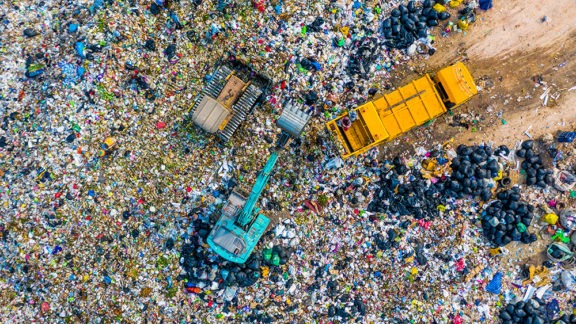Per- and polyfluoroalkyl substances (PFAS) are ubiquitous in the environment. Because a multitude of common commercial products contain PFAS, the potential exists for PFAS contamination to impact a wide variety of business sectors and practices. It’s especially difficult to determine who’s responsible for addressing PFAS when contamination likely stems from several origins.
Due to the proliferation and complex nature of PFAS, a single tool cannot be used to uncover their sources. There are thousands of different PFAS, each with unique chemical and physical properties that dictate how the compounds migrate and distribute through water, sediment, and soil. It is essential to use multiple lines of evidence to correctly identify the sources of the PFAS and determine appropriate cost allocation for possible assessment and mitigation.
The best approach to source allocation
When point-source (a single identifiable pollution source) contaminant releases have finite boundaries, the process of identifying responsible parties liable for PFAS remediation is straightforward. In these cases, any one of the methodologies listed below on its own could sufficiently identify the source.
However, given the complexity and variety of site-specific conditions, a holistic course of action using a multiple-lines-of-evidence approach is needed. The best mix of tools will depend on each scenario, but the process of tracing multiple lines of evidence often combines some of the methods described below:
Key questions for site owners:
- How can I know whether PFAS found near my site came from my facilities?
- How can I determine my responsibility when groundwater is likely contaminated from several different sources of PFAS?
- What’s the most accurate method for determining source allocation?
- Analytical chemistry identifies changes in manufactured mixtures of PFAS over time by utilizing the most robust analyte list available.
- PFAS fate and transport looks at how the unique chemical and physical properties of PFAS and site characteristics influence distribution and migration.
- Analysis of site-specific conditions with hydrogeology and geochemistry enables an understanding of flow paths.
- Graphical analysis examines the concentration trends of PFAS over time or space at individual locations. It also features radar plots, stacked columns, and pie charts for visualization purposes.
- Statistical methods may include multivariate statistics, machine learning, and the U.S. Environmental Protection Agency Unmix model, along with others. While these are potentially useful, practitioners continue to vet the use of statistics for the purpose of these evaluations.
Answering the question: Are these PFAS mine?
Correctly attributing PFAS sources using multiple lines of evidence will help to accurately determine cost allocation.
You’ll need:
- A multidisciplinary technical team with expertise covering analytical chemistry, hydrogeology, and PFAS fate and transport.
- Experience using all the allocation tools above and an understanding of which lines of evidence to use in your unique scenario.
- The ability to work together to solve the problem holistically.
- A partnership with attorneys to help allocate risks and costs among responsible parties.
- The ability to determine, manage, and communicate liabilities.
Be prepared to correctly attribute potential PFAS sources from your facilities. Haley & Aldrich is on the forefront of PFAS source differentiation. Please contact any of the authors below to get further information or to discuss your specific concerns.
Published: 7/27/2022
Authors

Principal Consultant, Environmental Sciences

Principal Consultant, Applied Research Leader

Environmental Engineer




